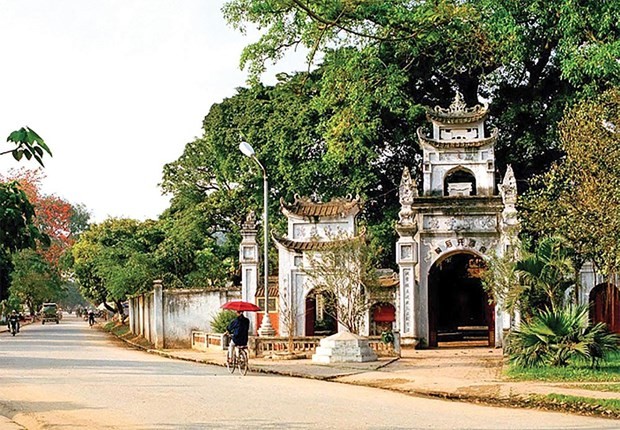
Hung Yen looks to further develop tourism
Latest
 |
| A relic site in Hung Yen. (Photo: baodautu.vn) |
Compared to many other localities, Hung Yen holds a large number of relic sites appreciated in terms of history, architecture and fine arts.
The province boasts 1,802 relic sites, including two special national ones of Pho Hien and Thai Lac pagoda; three national treasures; and 172 national-level relic sites; together with more than 400 local traditional festivals.
It is also the homeland of many national heroes and cultural celebrities, such as King Trieu Viet Vuong who reigned from 548-571; Pham Ngu Lao, a general in the Tran dynasty in the 14th century; Hoang Hoa Tham, who led the Yen The uprising against the French colonial forces in between 1884-1913; and late General Secretary of the Communist Party of Vietnam Nguyen Van Linh who initiated the nation’s reform period.
The Pho Hien relic complex in the villages of Dang Chau and Ne Chau was once a bustling commercial port on the Red River, reaching its heyday in the 17th-18th century.
Pho Hien was second only to the Imperial capital city of Thang Long as a trading point in Vietnam. It was well-known among foreign traders, especially those from the Netherlands, Japan, Spain, Portugal and China.
Along with goods, foreign traders brought various architecture styles, customs and cultures, which were imprinted in architectural works such as the Xich Dang literature temple, Chuong pagoda, Hien communal house, Mau, May and Kim Dang temples.
Apart from buildings used for religious and spiritual reasons, there are also markets, wells and cemeteries.
The variety of historical relic sites contributed to forming a string of traditional festivals.
The Pho Hien Cultural Festival takes place in the Pho Hien relic complex in the third lunar month every year. It features traditional rituals, games and art performances, and culinary art, bringing alive the history, spirituality and culture of the land.
It allows tourists to get insight into the culture and history of the ancient river port.
The event also helps promote the locality’s potential in tourism and service development and serves as an attractive spiritual and religious tourism destination.
In addition to its richness in culture and history, Hung Yen is also celebrated for its eco-tourism, with the most well-known being the Ecopark Township. Tourists can experience a fresh, green and multi-architectural space there. To serve travellers, Ecopark has set up various free bus routes to transport tourists from the centre of Hanoi capital.
Deputy Director of the provincial Department of Culture, Sports and Tourism Pham Van Hieu said the province still has many sites where tourism can be developed, like Hoa Phong handicraft village, Lac Dao rice wine village, and Cao Thon incense making village.
Over the years, many travel agencies as well as the Hanoi’s Tourism Department and nearby provincial local travel agencies have co-operated with Hung Yen's Department of Culture, Sports and Tourism to organise tours. On these journeys, tourists can feel the fresh countryside air and experience community life and traditional products of the province, Hieu said.
Although there is huge tourism potential, Hung Yen has failed to make a breakthrough in recent years. According to the director of Sao Mai Tourism Limited Company, Hoang Phuong Mai, the province was only focusing on spiritual tourism, which mainly attracted visitors in spring. Meanwhile, many tourists have a huge interest in simply exploring.
“The province has many advantages which need to be explored. There must be a connection between the local administration and tourism agencies to create more exciting tours,” Mai said.
Vice Chairman of the provincial People's Committee Nguyen Duy Hung said the province will focus on co-operating with regional provinces that are home to big tourism hubs like Hai Phong, Quang Ninh, Ninh Binh, and especially Hanoi.
He emphasised the importance of promoting and mobilising investment to propel the province's potential for tourism development.





















